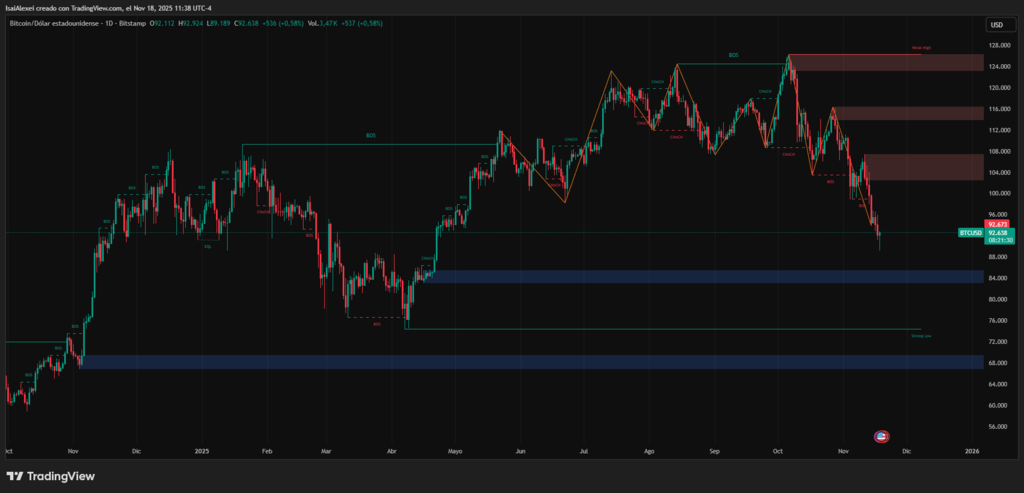TL;DR
- Bitcoin’s price and market dominance both fell significantly this past month.
- Analysts identify a market-wide deleveraging cycle, not a shift to altcoins.
- Major altcoins underperformed Bitcoin, showing no broad rotation evidence yet
Bitcoin’s market dominance declined this month. Its share of the total cryptocurrency market capitalization fell from 61.4% to 58.9%. This drop coincided with a decrease in Bitcoin’s price, which lost nearly sixteen percent over the past four weeks.
Typically, a reduction in Bitcoin’s dominance suggests investors are moving capital into other crypto assets, commonly called altcoins. However, current data and analyst opinions indicate the market is not in that phase.
The fall in Bitcoin’s price and its dominance forms part of a broader deleveraging process. This process involves the reduction of debt or high-risk positions in the market. Forced liquidations in October initiated this cycle, and since then the market has been grinding lower.
Rohit Apte, Head of Markets at Hex Trust, explained the situation. “Bitcoin’s drawdown this month reflects a general deleveraging that began with October’s liquidation. Since then, the market has been grinding lower as leverage is flushed out” stated Apte in an interview.
Most major altcoins registered deeper losses than Bitcoin and Ethereum. Coins like Ether (ETH), Cardano (ADA), Dogecoin (DOGE), and Solana (SOL) showed inferior performance. The XRP/BTC pair is one of the few exceptions that shows considerable strength.
On-Chain Activity Shows Stability, Not Euphoria
On-chain information reinforces this perspective. The Ethereum network maintains a stable level of activity, without displaying the congestion or sharp fee increases that characterize altcoin bull cycles.
For instance, the Base network processes roughly nineteen million transactions daily. Other major networks like Optimism, Arbitrum, Polygon, and Celo handle millions of transactions each day without unusual spikes.
Traders are Reducing their Risk Exposure
However, they are not moving their capital aggressively into higher-volatility assets. Caution remains the predominant attitude. The market needs to see Bitcoin and Ethereum stabilize in a firmer price range before a sustained rotation into altcoins can begin. For now, the general expectation points to sideways movement.

Bitcoin (BTC/USD) is trading at approximately $91,697, reflecting a 0.44% intraday decline. The chart clearly shows a continuation of the recent bearish momentum, confirming a Break of Structure (BOS) below the $95,000 level. This signals that the market has shifted from a previous consolidation range into a downward correction phase.
The current trend structure reveals multiple Change of Character (ChoCH) and BOS signals — each indicating that sellers have taken short-term control after a series of failed bullish retracements. The liquidity zones marked near $115,000–$125,000 have acted as strong rejection points, and price is now approaching a major demand zone between $84,000 and $86,000, highlighted in blue on your chart. That area represents a key potential reversal point where institutional orders are likely concentrated.
If Bitcoin manages to hold above $90,000, we could see a technical rebound toward $95,000–$97,000 in the short term. However, a clear break below $89,000 would open the path to test the $85,000 liquidity pool, possibly extending to $82,500 before finding solid support.
Overall, market structure remains bearish in the short term but with potential for recovery once demand reappears in the $84K–$86K range. Long-term fundamentals remain strong, yet short-term traders should remain cautious as volatility remains elevated.







